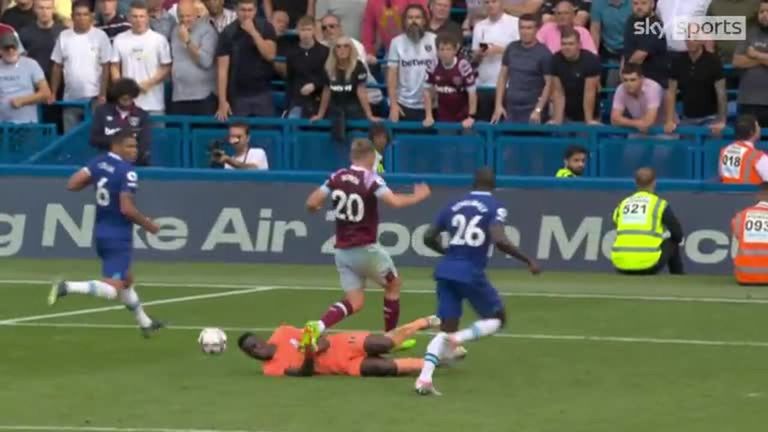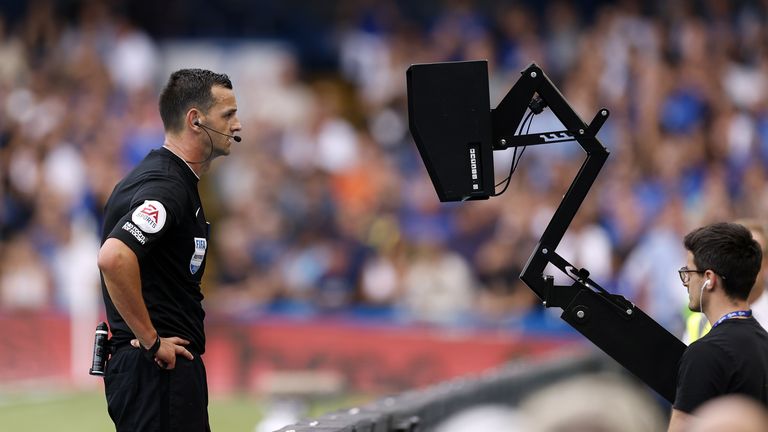VAR is in the headlines after a controversial weekend of Premier League officiating. Here we explain how it is supposed to work…
Who is VAR?
The Video Assistant Referee is a qualified referee who watches the match in the VAR Hub at Stockley Park. They have a variety of screens and camera angles and the ability to watch slow-motion replays and are joined by assistants and a replay operator. Using what they see, they can advise on-field referees during matches.
When do they get involved?
The referee can call for the VAR to review a decision during a game. Or VAR can alert the referee to a “clear and obvious” error that has taken place, involving either a goal, a penalty decision, a direct red card or case of mistaken identity.
Only the referee can ask VAR to intervene; players and coaching staff cannot.
What do they have the power to do?
If the VAR’s view does not back up the on-field referee’s view, the VAR can recommend the decision is overturned.
The referee can either stand by their original decision or go to the Referee Review Area – the monitor at the side of the pitch – to have another look. Again, they can then either stand by their original call or change it.
The final decision lies with the referee.
What can’t VAR get involved with?
With VAR limited to incidents involving goals, penalty decisions, direct red cards or cases of mistaken identity, there are a number of decisions which they cannot advise on.
These include simulation outside of the penalty area or the awarding of yellow cards for fouls.
VAR can report off-the-ball incidents missed by the referee, but only before the next time play restarts.
What goes on when there’s a tight offside call? Are the offside lines thicker this season?
VAR is only used for offside decisions which are in the build-up to a goal.
While assistant referees will flag for obvious offsides, they will keep their flag down if it is tight and there is an immediate goal-scoring opportunity until the passage of play is completed. If a goal is scored VAR will review the decision.
VAR use calibrated lines on their screens to judge whether an incident is offside – one line for the attacker, one for the defender.
These lines are just one pixel wide, to improve accuracy. For extremely tight calls, the thicker broadcast lines are then put on top of those one-pixel lines and if those lines overlap the situation is deemed as onside. This gives the attacking team the benefit of doubt.
Calibrated cameras are used and even the camber of pitches are taken into account to improve accuracy.
Does the referee have to take their advice?
No. The final decision sits with the referee.
How often do referees ignore VAR’s advice?
It has become extremely rare for referees to go to the pitchside monitor and stick with their original decision after being advised to take another look by VAR. So much so the home crowd at Old Trafford could be heard cheering when referee Paul Tierney went to the monitor to look again at Gabriel Martinelli’s goal for Arsenal against Manchester United, confident he was about to disallow it for a foul in the build-up, which he did.
However, referee Michael Oliver stuck with his handball call against Bournemouth in their match with Nottingham Forest on Saturday and, in a more high-profile example, in the Merseyside derby in February 2021, Everton clinched a 2-0 victory at Anfield thanks to a late penalty which was awarded by referee Chris Kavanagh, who opted to stick with his original decision after checking the pitchside monitor on VAR’s advice.
What sort of success rate does VAR have?
According to the Premier League website, the introduction of VAR in 2019/20 increased the percentage of correct key match decisions from 82 per cent the previous year to 94 per cent.
Over 2,400 incidents were checked during that 2019/20 season with 109 decisions overturned by VAR, an average of an overturned decision every 3.5 matches.
However, there have been three decisions this season in which PGMOL has admitted the VAR decision was incorrect: Cristian Romero’s hair-pull on Marc Cucurella, West Ham’s disallowed equaliser at Chelsea and Newcastle’s disallowed goal against Crystal Palace.
Why don’t we hear from them?
Like other match officials, VAR officials are not obliged to speak with the media, however, Mike Dean admitted in his newspaper column earlier this season that he made an error as VAR in Chelsea’s draw with Tottenham, failing to punish Romero for his hair-pull on Cucurella in the build-up to Spurs’ equaliser.






